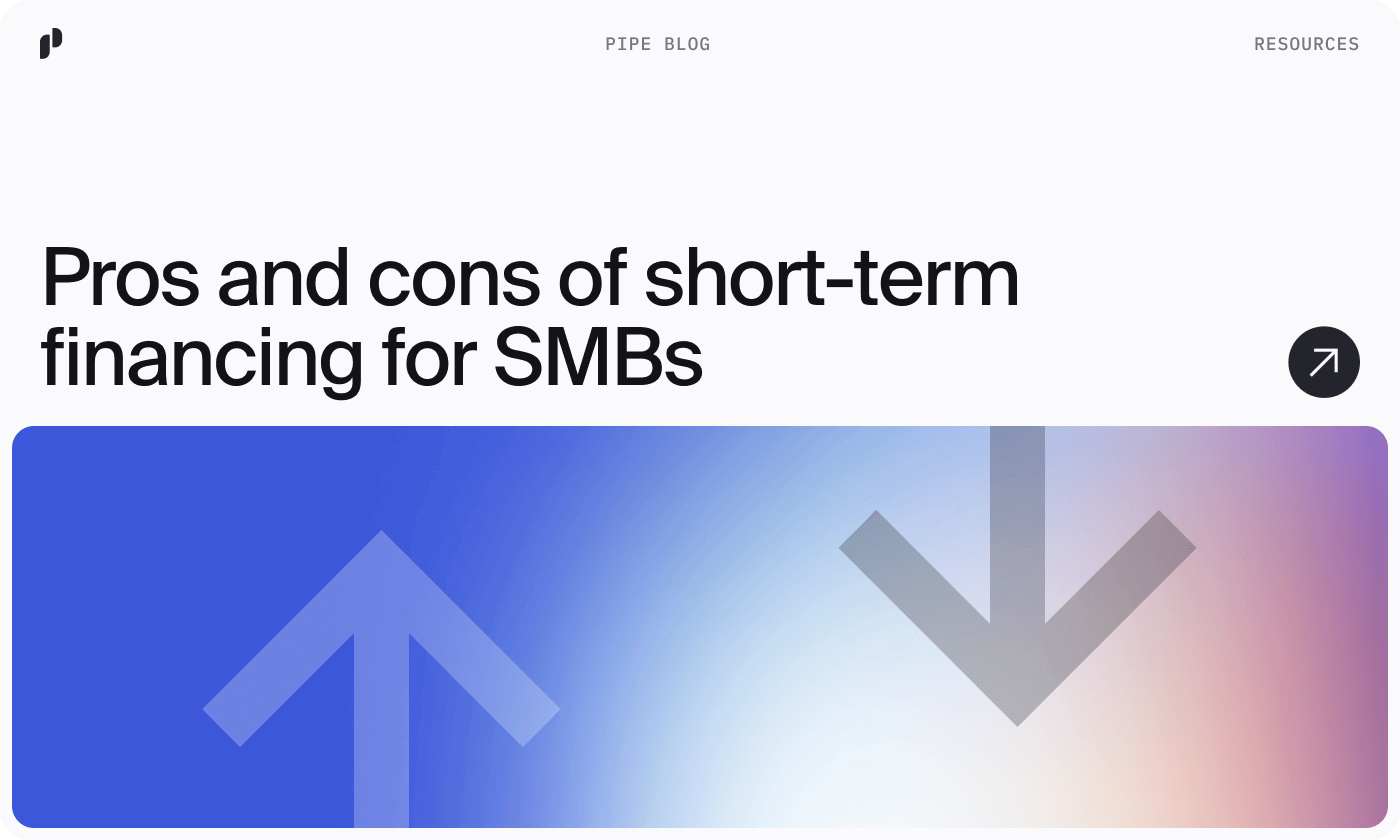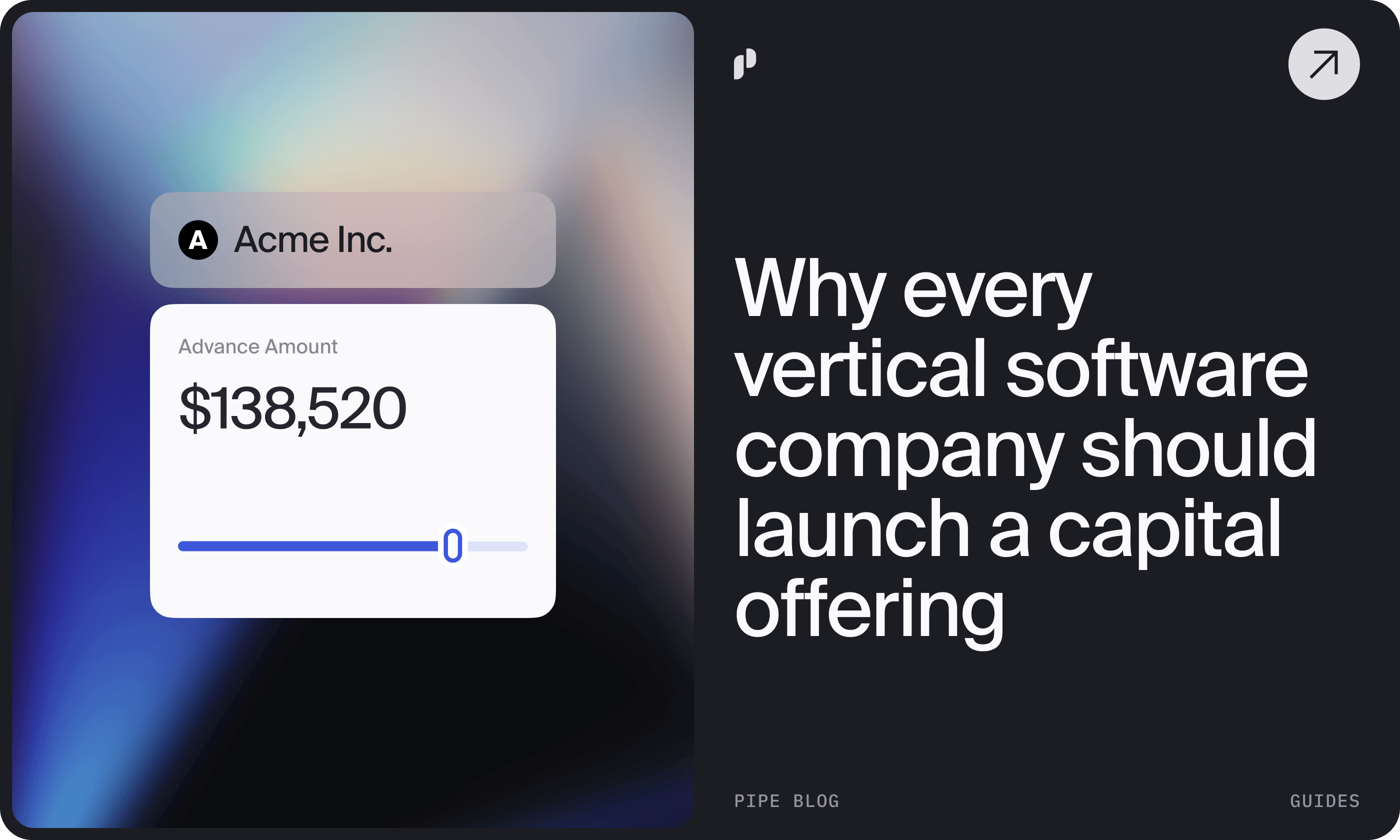How the Payments Industry Can Leverage Personalization to Grow GPV and Loyalty
Pipe CPTO Namrata Ganatra shares how Payfacs and ISVs can leverage personalization and first-party data to improve merchant experience.
By Namrata Ganatra February 20, 2024
This article was originally published on Payments Dive on October 25, 2023
Personalization has become a cornerstone in shaping products and services today. As consumers, we’ve grown accustomed to customized offerings, an expectation that's rapidly expanding into the B2B sector. Within this evolving market, the payments industry has a notable advantage: access to a vast amount of first-party data gives companies accepting payments a unique edge. This sets the stage for verticalized Independent Software Vendors (ISVs) and payment facilitators (PayFacs) to develop finance solutions tailored to specific industry requirements and even bespoke offers for a company’s unique situation.
Leveraging first-party data in payments
Companies that facilitate and handle payments are sitting on a goldmine: their transaction data. This wealth of data holds more than just transactional details; it reveals patterns, preferences, financial health, seasonality trends, and behaviors of the customers and merchants involved.
In the broader digital landscape, the prominence of third-party cookies is waning due to increasing privacy concerns and stringent regulations. These changes have diminished the reliability and depth of insights from third-party data sources, making first-party data even more invaluable.
First-party transaction data offers several distinct advantages:
Direct Insight: Unlike data sourced from third parties, which may be diluted or generic, first-party data is direct and unfiltered. This means a clearer picture of customer preferences and behaviors without the noise of external sources.
Timeliness: Real-time transaction data allows companies to swiftly respond to emerging trends, customer needs, or market shifts, providing agility that's critical in the fast-paced world of finance.
Relevance: By analyzing transactional trends, payment companies can discern not only what products or services a customer prefers but also when and how they prefer them. This granular level of detail allows for the creation of highly relevant product offerings.
Privacy & Compliance: Using first-party data reduces reliance on external data sources, which often come with a host of privacy concerns and regulatory implications. Companies can have better control over data handling, ensuring both security and compliance.
Armed with these insights from first-party data, payment companies are in a prime position to craft personalized financial products and services. These tailored offerings, rooted in real transactional behaviors, can resonate more deeply with customers, leading to increased loyalty and engagement. The potential extends beyond just offering products; it opens doors to proactive solutions, anticipating customer needs even before they are explicitly expressed.
The Embedded Capital Solution
Find out how Pipe's platform can be yours
Unique positioning of verticalized ISVs and PayFacs
Verticalized ISVs and PayFacs stand distinctively in the payments ecosystem, owing to their deep industry understanding and access to transactional data. This combination allows them to design highly tailored financial solutions. More than just addressing current needs, their keen grasp of industry-specific challenges positions them to anticipate and create solutions for future demands. Instead of merely adapting, they're often a step ahead, aligning their offerings closely with the evolving needs of the industries they serve, thus becoming strategic partners rather than just service providers.
Making the most of transaction data
Transactional data isn't just about numbers—it's a window into a merchant's daily operations. By analyzing this data, companies can offer embedded capital on a daily basis, ensuring timely financial support. Moreover, pre-qualifying merchants based on this data can lead to more effective marketing campaigns. For instance, offering funding solutions at the right time or providing merchants with indicative funding limits can result in improved customer engagement and loyalty.
Beyond immediate financial offerings, transactional data provides a roadmap for long-term relationship building with merchants. By continuously monitoring and understanding spending patterns, seasonality, and other financial behaviors, payment companies can predict potential business challenges and opportunities for merchants. This proactive approach enables companies to tailor their financial products, not only addressing immediate needs but also future-proofing merchants and building those future needs into their product roadmap. In doing so, they position themselves as invaluable partners, deeply embedded in the growth journey of their merchants.
Rise of recommendation engines
With the recommendation engine market poised to reach $54 billion by 2030, the potential for ISVs and PayFacs is significant. These engines, powered by first-party data, can push real-time product suggestions that resonate with the merchant's immediate needs. Whether it's a tailored financial product or a unique service offering, timely and relevant recommendations can drive growth and customer satisfaction.
A recommendation engine, tapping into this financial data, could proactively suggest a tailored financing solution to help manage inventory or expand operations. Conversely, during slower periods, it might propose short-term working capital options to ensure smooth cash flow. By constantly analyzing transaction trends, payment behaviors, and historical financial data, these engines can pinpoint the exact financial product a merchant might require, even before the merchant realizes the need. This level of anticipatory service, backed by powerful algorithms, ensures that financial solutions are not only relevant but also delivered at the optimal moment, maximizing impact and fostering deeper merchant trust.
Introducing credit and savings programs
Beyond immediate financial solutions, ISVs and PayFacs have the potential to introduce credit and savings programs that genuinely matter to merchants. Relevant reward schemes, for instance, can motivate merchants to engage more with a platform. On the savings front, offering multiple high-yield savings account options allows merchants to diversify their financial goals, from short-term objectives to long-term financial security. Moreover, given the unpredictable nature of business incomes, offering investment platforms with varying degrees of liquidity and returns can help merchants optimize their surplus cash.
Maximizing merchant loyalty through tailored rewards programs
Harnessing the depth of first-party transaction data, PayFacs and ISVs are uniquely positioned to create bespoke loyalty and rewards programs for their merchants. One such approach is the introduction of Tiered Benefits. For example, merchants who achieve specific transaction milestones could enjoy perks such as reduced fees, access to premium customer support, or even the chance to engage in exclusive partnerships.
Additionally, to foster a sense of community and expand their network, PayFacs and ISVs can roll out Referral Programs. In this model, merchants are rewarded for bringing new businesses on board. These rewards could manifest as cashback incentives or special discounts on transaction rates. In essence, by tapping into personalized data-driven strategies, PayFacs and ISVs can ensure that their reward systems resonate more deeply with their merchant partners, driving both loyalty and growth.
Conclusion
The payments industry is at an inflection point, with the potential to reshape its future through personalization. With the right mix of data, technology, and industry expertise, verticalized ISVs and PayFacs can craft financial solutions that not only meet the present needs of the industry but also anticipate its future demands. As the lines between B2C and B2B continue to blur, personalization stands as a key differentiator, promising growth, loyalty, and long-term success.
Disclaimer: Pipe and its affiliates don't provide financial, tax, legal, or accounting advice. What you're reading has been prepared for knowledge-sharing and informational purposes only. Please consult your financial and legal advisors to determine what transactions and decisions are right for you and your business.
Share this article
Namrata Ganatra Namrata is the Chief Product and Technology Officer of Pipe. She has a proven track record of leading successful initiatives across product, engineering, and payments for several notable companies including Autograph, Coinbase, and Facebook. Connect with Namrata on LinkedIn to keep the conversation going.

February 7, 2024
Pros and Cons of Short-Term Financing for SMBs - Understanding the types of financing and which one...
February 7, 2024

January 29, 2024 — 5min read
Why every vertical software company should launch a capital offering
5min —January 29, 2024



